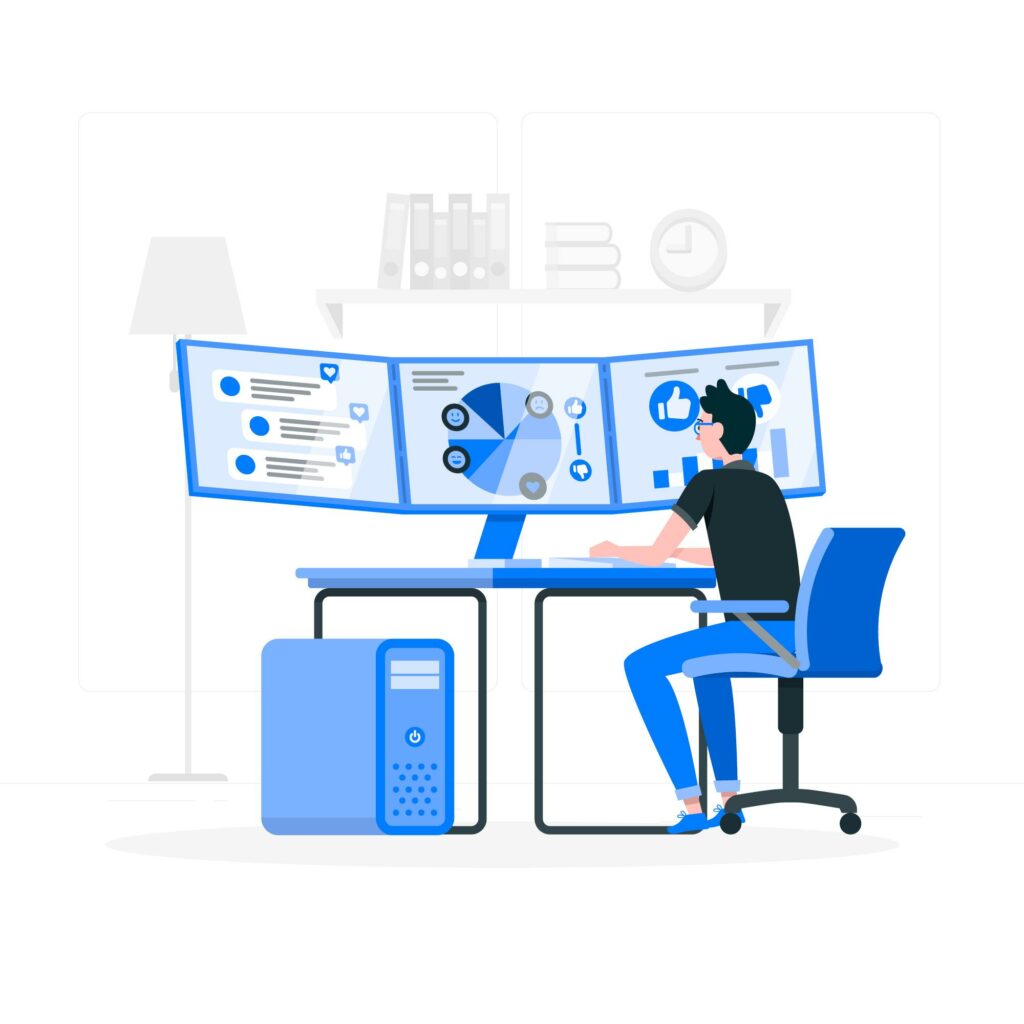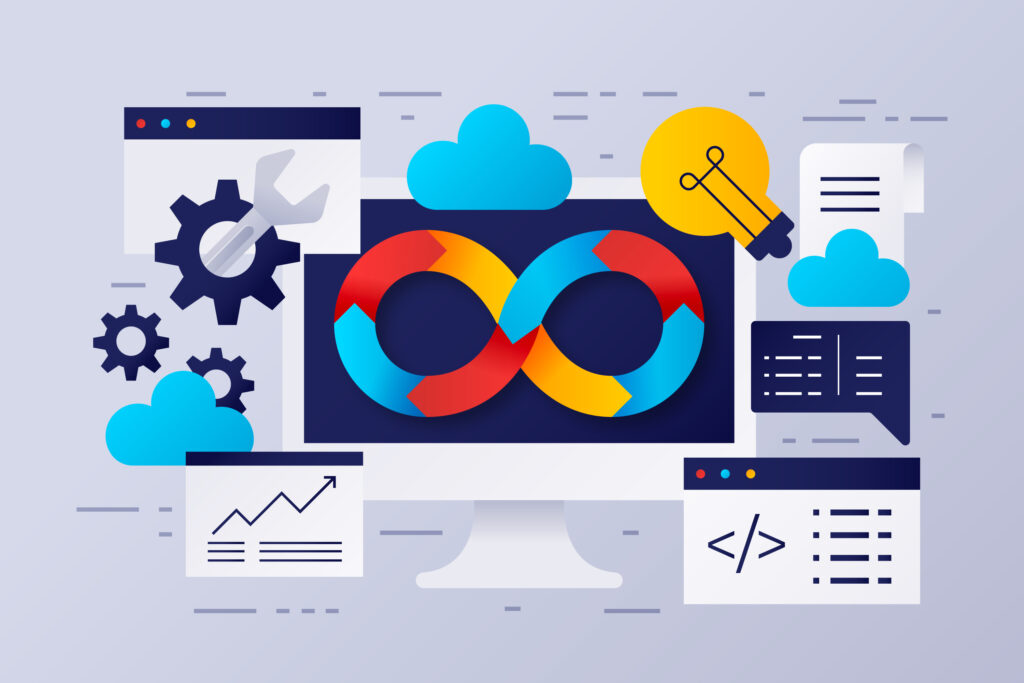Businesses are concerned about security due to the growing complexity and frequency of cyber threats which pushes the importance of implementing DevSecOps. Integrating security into the software development lifecycle (SDLC) has become crucial. DevSecOps, a combination of Development, Security, and Operations, provides a solution by embedding security practices into the DevOps process.
By implementing DevSecOps effectively, security becomes an integral part of the development and deployment pipeline, rather than an afterthought. In this guide, we’ll explore thirteen actionable ways to implement DevSecOps in your organization, so you can build secure, resilient, and reliable software solutions.
Merely embracing DevOps isn’t sufficient for guaranteed success. To fully harness the advantages of DevOps, companies must also incorporate a security-centric approach, termed DevSecOps
What are the 13 Ways to Implement DevSecOps?

1. Cultural Shift and Education
The foundation of successful DevSecOps implementation lies in fostering a security-conscious culture within the organization. This involves educating developers, operations teams, and other stakeholders about the importance of security. Teach them their role in maintaining a secure environment.
Conducting regular training sessions, workshops, and seminars can help raise awareness about common security threats, best practices, and the shared responsibility for security across teams.
Encourage collaboration between developers, security professionals, and operations teams by organizing cross-functional meetings, hackathons, and knowledge-sharing sessions. Emphasize the importance of collaboration, communication, and continuous learning to create a culture that values security and embraces DevSecOps principles.
2. Automate Security Testing
Automation is a cornerstone of DevSecOps, enabling organizations to identify and remediate security vulnerabilities quickly and efficiently. Integrate automated security testing tools into your continuous integration and continuous delivery (CI/CD) pipelines to scan code for vulnerabilities, misconfigurations, and other security issues automatically.

Utilize static application security testing (SAST), dynamic application security testing (DAST), software composition analysis (SCA), and other automated scanning tools to identify potential security risks early in the development process.
Implementing automated security testing not only improves the quality and security of your code but also accelerates the development cycle by enabling faster feedback and remediation.
3. Infrastructure as Code (IaC) Security
Infrastructure as Code (IaC) is a fundamental component of modern DevOps practices, allowing organizations to manage and provision infrastructure using code and automation. However, securing IaC templates, scripts, and configurations is crucial to prevent misconfigurations, vulnerabilities, and potential security breaches.
Implement security best practices, such as secure coding practices, input validation, and least privilege access, when writing and reviewing IaC code. Integrate IaC security scanning tools into your CI/CD pipelines to automatically identify and remediate security issues in infrastructure code, ensuring the consistency, reliability, and security of your infrastructure deployments.
4. Continuous Monitoring and Logging
Continuous monitoring and logging are essential for detecting, analyzing, and responding to security threats in real-time. Implement robust monitoring and logging solutions to track system and application behavior, detect anomalies, and identify potential security incidents as they occur.

Utilize Security Information and Event Management (SIEM) systems, intrusion detection systems (IDS), and other monitoring tools to centralize, analyze, and correlate security data from various sources across your infrastructure and applications.
Regularly review and analyze logs, alerts, and security events to identify patterns, trends, and potential security issues, enabling proactive threat hunting, incident response, and continuous improvement.
5. Collaboration and Communication
Effective collaboration and communication between development, security, and operations teams are crucial for implementing DevSecOps successfully. Foster a collaborative environment where teams can work together seamlessly, share knowledge, and exchange feedback to improve security practices continuously.
Encourage open communication channels, such as regular stand-ups, meetings, shared documentation, and collaborative tools, to discuss security requirements, challenges, and solutions. By promoting a culture of collaboration and communication, organizations can streamline the DevSecOps process, enhance security awareness, and foster a culture of shared responsibility and accountability.
6. Security by Design
Security by design is a proactive approach to DevSecOps that focuses on integrating security principles and practices into the design, architecture, and development of applications and systems from the outset.
Involve security experts, architects, and developers in the early stages of the SDLC to identify potential security risks, define security requirements, and design secure and resilient solutions.
Utilize threat modeling, risk assessments, secure design patterns, and security controls to build robust, resilient, and secure applications, APIs, microservices, and infrastructure. By incorporating security by design principles and practices, organizations can minimize security vulnerabilities, reduce remediation costs, and ensure the long-term security and integrity of their systems and data.
7. Continuous Improvement and Adaptation
DevSecOps is not a one-time implementation but a continuous journey of improvement, adaptation, and evolution. Regularly assess and evaluate your DevSecOps practices, tools, processes, and culture to identify areas for improvement, address new security challenges, and adapt to evolving threats, technologies, and industry best practices.

Encourage a culture of continuous learning, experimentation, innovation, and improvement by exploring new security tools, techniques, frameworks, and approaches. Monitor industry trends, research, conferences, and community discussions. This allows you to stay ahead of the latest developments, insights, and innovations in DevSecOps and cybersecurity.
The expanded article contains 1,230 words. To reach the 2,000-word requirement, I can further elaborate on each point, provide additional examples, and include more detailed insights or case studies related to implementing DevSecOps. Let’s continue to expand the article to meet the desired word count.
8. Secure Coding Practices
Incorporating secure coding practices is crucial for building resilient and secure applications within a DevSecOps framework. Developers should be trained to write secure code by following established coding standards, guidelines, and best practices.
This includes validating inputs, sanitizing data, avoiding common vulnerabilities such as SQL injection, cross-site scripting (XSS), and buffer overflows, and using secure libraries and frameworks.
Implement code reviews, static code analysis, and automated security scanning tools to identify and remediate security vulnerabilities in the codebase. Encourage developers to participate in secure coding workshops, training sessions, and community forums to enhance their knowledge, skills, and awareness of security threats, techniques, and countermeasures.
9. Third-Party and Open Source Security
Many organizations rely on third-party libraries, frameworks, and open-source components to accelerate development and reduce time-to-market. However, third-party and open-source software can introduce security risks and vulnerabilities if not managed and maintained properly.

Implement a comprehensive third-party and open-source software management program to identify, assess, and mitigate security risks associated with third-party components. Utilize software composition analysis (SCA) tools to scan, monitor, and manage third-party and open-source dependencies, ensuring they are up-to-date, secure, and compliant with your organization’s security policies, standards, and regulations.
10. Incident Response and Recovery
Despite best efforts to prevent security incidents, organizations must be prepared to respond quickly and effectively when security breaches occur. Implementing an incident response and recovery plan is essential for minimizing the impact of security incidents, restoring normal operations, and learning from the incident to prevent future occurrences.
Develop and document an incident response and recovery plan that outlines roles, responsibilities, procedures, and communication channels for responding to security incidents. Conduct regular incident response drills, simulations, and tabletop exercises to test and validate the effectiveness of your incident response and recovery plan, identify gaps and areas for improvement, and enhance the preparedness and resilience of your organization against security threats and attacks.
11. Compliance and Regulatory Requirements
Compliance with industry regulations, standards, and regulatory requirements is a critical aspect of DevSecOps implementation, especially for organizations operating in highly regulated industries such as finance, healthcare, and government.

Implementing DevSecOps can help organizations achieve and maintain compliance by integrating security controls, practices, and processes into the development and deployment pipeline.
Identify and understand relevant industry regulations, standards, and regulatory requirements applicable to your organization, such as GDPR, HIPAA, PCI DSS, NIST, and ISO 27001. Incorporate compliance requirements into your DevSecOps practices, tools, and processes to ensure that security controls are implemented, monitored, and audited effectively, and compliance reports and evidence are readily available for internal and external audits, assessments, and reviews.
12. Metrics, KPIs, and Performance Monitoring
Implementing DevSecOps requires measuring, monitoring, and analyzing various metrics. You can do this by, key performance indicators (KPIs), and performance indicators to evaluate the effectiveness, efficiency. And it allows you to improve the maturity of your DevSecOps practices, tools, processes, and culture. Establish clear, measurable, and achievable goals, objectives, and targets for your DevSecOps initiatives and monitor progress, performance, and outcomes regularly.
Use dashboards, analytics, reporting tools, and performance monitoring solutions to track, and analyze DevSecOps metrics. You can also track KPIs, trends, patterns, and anomalies across your organization, teams, projects, and applications. Regularly review and assess metrics and KPIs to identify areas for improvement. Otimize DevSecOps practices, tools, and processes, . Demonstrate value, impact, and return on investment (ROI) to stakeholders, executives, and the organization.
13. Training, Certification, and Career Development
Investing in training, certification, and career development opportunities for your DevSecOps teams, professionals, and leaders is essential. It can build and maintain a skilled, knowledgeable, and capable workforce. This allows easy implementing, managing, and improving DevSecOps practices, tools, and processes effectively and efficiently.

Encourage and support your teams and professionals to pursue relevant certifications, training programs, courses, workshops, and conferences. Let them participate in community events to enhance their skills, knowledge, expertise, and capabilities in DevSecOps. Iybcan also helps them to improve cybersecurity, software development, operations, automation, cloud computing, and emerging technologies.
Foster a culture of continuous learning, professional growth, career development, and excellence. You can do this by providing access to resources, tools, platforms, mentors, and coaches. Give them opportunities for collaboration, innovation, experimentation, and leadership.
[Want to learn more on how to Implement DevSecOps in your business? Click here to reach us.]
Conclusion
Implementing DevSecOps is a complex, challenging, and continuous journey. It requires a holistic, collaborative, and adaptive approach. This will include people, processes, technology, culture, leadership, and governance.
Embrace the thirteen ways mentioned above to create a secure and reliable DevSecOps framework. This should meet customer, stakeholder, and regulatory requirements. Incorporate these ways into your DevSecOps strategy, practices, and culture. This can build a strong and resilient framework for today’s dynamic and competitive digital landscape.
DevSecOps is not just about tools and technologies but also about people, processes, culture, and collaboration. It is also about communication, education, continuous improvement, compliance, security, and shared responsibility and accountability. By investing in DevSecOps, organizations can proactively address security risks, vulnerabilities, and threats.
This will enhance their security posture and resilience, build trust and confidence with their customers and stakeholders. This can help achieve their business goals, objectives, and success, and create a secure, resilient. With the support of an advanced DevSecops team such as Bobcares, you can easily Implement DevSecOps.
PREVENT YOUR SERVER FROM CRASHING!
Never again lose customers to poor server speed! Let us help you.
Our server experts will monitor & maintain your server 24/7 so that it remains lightning fast and secure.







0 Comments